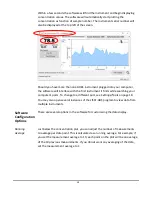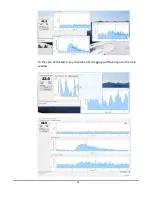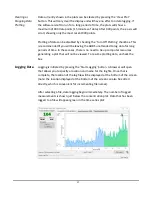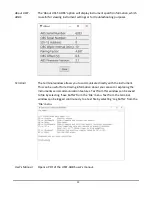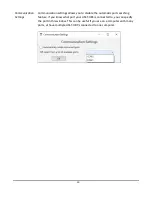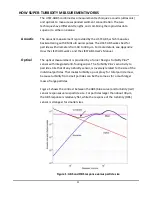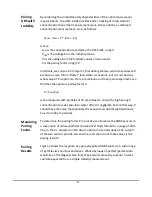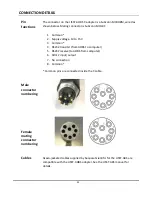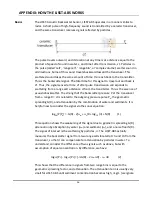
27
noise floor, it is small]. Thus, the two-point backscatter determines the quantity in
square bracket. Any increase in the difference determines water attenuation term.
Knowing the terms in Eq.(2), we simply project the measurement to a small distance
from the transducer, i.e. at R ~0 in Eq.(1), yielding the concentration term log
10
(
).
With a little more arithmetic, that is attenuation-corrected backscattering, or ACB.
In short, the combined geometrical and water attenuation are measured once and
are fixed. Temperature related changes in
w
are small and applied subsequently.
The sediment attenuation is measured by the change in the difference between two
range cells. And then, the measurement is projected to the transducer to get ACB
which is then converted to Uncalibrated Concentration
Calibration
The idealized relationship between ACB and sediment concentration is shown in the
plot below. Note that this is a log-linear relationship, which is helpful for analysis, as
well as matching the characteristics of the detection electronics. ACB counts depend
on log
10
(C). The slope of the calibration line K
o
is fixed by electronics. In practice, the
raw signals do not perfectly match this linear characteristic, but each LISST-ABS is
calibrated at the factory to measure and correct its non-idealities. The offset at
1mg/L (where log
10
(1) =0) is called N
ref
. For all instruments, N
ref
=1000.
The factory calibration uses glass beads of diameter 75 to 90 microns, so every
LISST-ABS matches this characteristic for those particles. A change in sediment
grain-size or other properties does not change the slope, K
o
, only the offset, N
ref
.
While the logarithmic ACB is helpful for theoretical analysis, the LISST-ABS reports
final values as the more intuitive linear quantity, milligrams per liter.
N
ref
K
0


